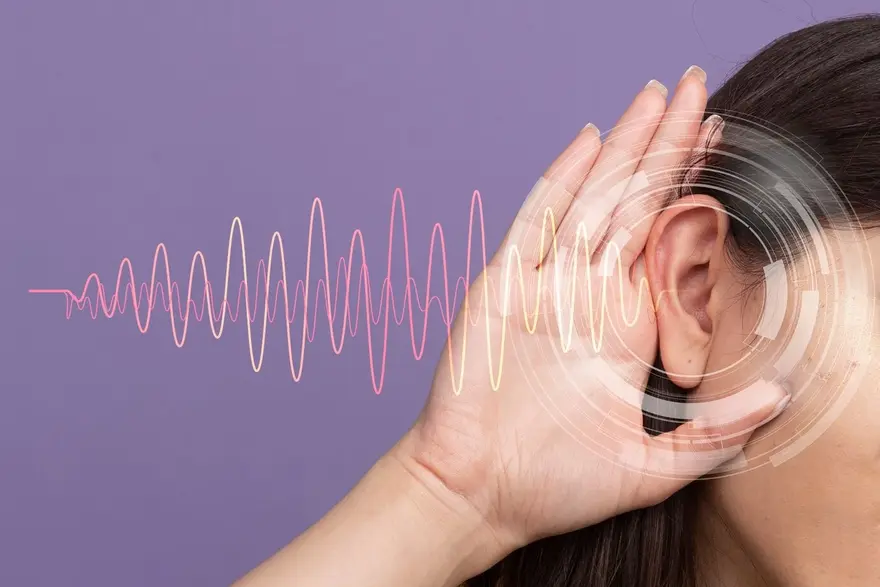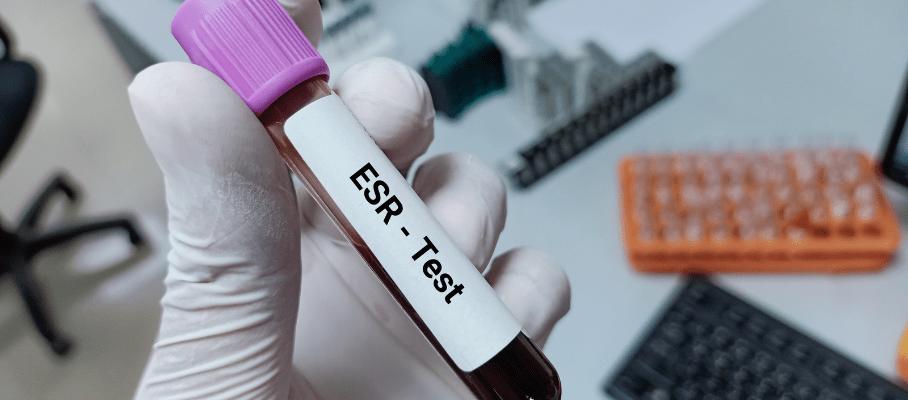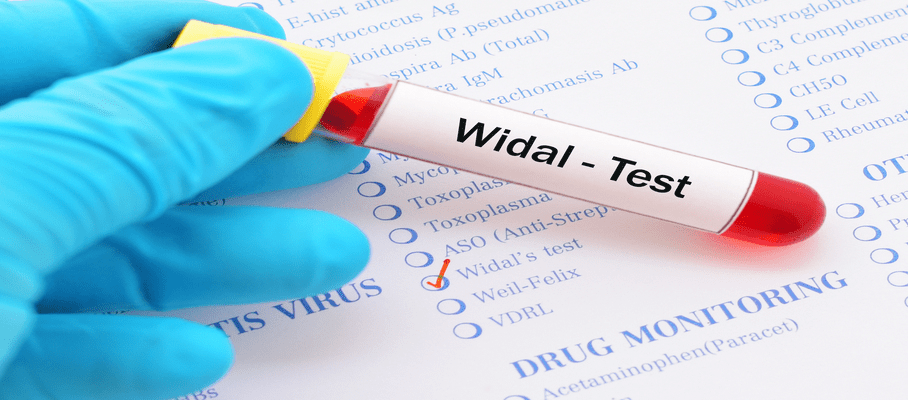Preventive Healthcare
BERA Test: Know Everything In Detail
230 Views
0

Hearing is a vital sense that allows us to connect with the world around us. When hearing issues arise, it's essential to undergo proper testing and diagnosis to determine the best course of action. One such test is the brainstem evoked response audiometry, also known as the BERA test. In this article, we'll delve into the details of this test, including its benefits, procedure, BERA test normal range, and more, to help you understand this important diagnostic tool better.
What is the BERA Test?
BERA Test, short for brainstem evoked response audiometry, is an objective hearing assessment that measures the auditory nerve's response to sound stimulation. By recording electrical activity along the auditory pathway, the BERA test evaluates the integrity of the hearing system from the ear to the brainstem. This sophisticated diagnostic tool is particularly useful for assessing hearing in newborns, infants, and individuals with developmental or cognitive challenges who cannot provide reliable responses during traditional hearing tests.
Why is the BERA Test Done?
The primary purpose of the BERA test is to detect hearing loss and identify abnormalities in the auditory nerve and brainstem. This test is commonly recommended in the following situations:
- Newborn Hearing Screening: The BERA test is a crucial tool for early detection of hearing impairments in newborns, enabling timely intervention and support for optimal speech and language development.
- Diagnosing Hearing Loss: When conventional audiometry is inconclusive or not feasible, the BERA test provides an objective assessment of hearing thresholds and type of hearing loss (conductive, sensorineural, or mixed).
- Neurological Evaluation: The BERA test can detect abnormalities in the auditory pathway related to neurological conditions such as multiple sclerosis, brainstem tumors, or auditory neuropathy.
- Monitoring Hearing Function: The test may be used to monitor changes in hearing status over time, especially in individuals undergoing treatments that may affect hearing, such as chemotherapy.
How Does the BERA Test Work?
Here's a step-by-step overview of how the BERA test is conducted:
- Electrode Placement: Small electrodes are placed on the scalp, forehead, and earlobes to record electrical activity. These electrodes are painless and do not puncture the skin.
- Sound Stimulation: The individual being tested wears earphones or tiny earbuds through which a series of click or tone burst sounds are presented at various intensities.
- Response Recording: As the auditory nerve and brainstem respond to the sound stimuli, the electrodes capture the electrical waveforms generated. These waveforms, known as auditory brainstem responses (ABR), are recorded and analyzed by specialized equipment.
- Interpretation: The audiologist or ENT specialist interprets the ABR waveforms to determine hearing thresholds, identify any abnormalities in the auditory pathway, and assess the integrity of the brainstem's response to sound.
Who Needs a BERA Test?
The BERA test is recommended for:
- Newborns and infants, especially those with risk factors for hearing loss such as family history, premature birth, or certain infections during pregnancy
- Young children who cannot reliably participate in behavioral hearing tests
- Individuals with developmental delays, cognitive impairments, or other conditions that make conventional audiometry challenging
- Adults with suspected hearing loss or neurological conditions affecting the auditory pathway
- Patients undergoing treatments that may impact hearing, such as chemotherapy or exposure to ototoxic medications
BERA Test Procedure—Step-by-Step
Here's a detailed walkthrough of the BERA test procedure:
- Preparation: No special preparation is needed for the BERA test. You can eat, drink, and take your regular medications as usual.
- Electrode Placement: The audiologist will clean the areas where the electrodes will be placed (scalp, forehead, behind the ears) and apply a conductive paste to help the electrodes adhere and pick up electrical signals. The electrodes are small, flat discs that are painless and do not puncture the skin.
- Sound Stimulation: You or your child will wear earphones or tiny earbuds through which a series of click or tone burst sounds will be played at different volumes and pitches.
- Recording: As the auditory system responds to the sound stimuli, the electrodes will capture the electrical waveforms generated. You'll be asked to relax or even sleep during the test to minimise muscle movement that could interfere with the recordings.
- Interpretation: After the test, the audiologist will analyze the recorded waveforms to determine hearing thresholds, identify any abnormalities, and assess the functioning of the auditory pathway from the ear to the brainstem.
Is the BERA Test Painful?
Rest assured, the BERA test is completely painless and non-invasive. The electrodes used are small, flat discs that are gently attached to the skin surface with a conductive paste. They do not puncture the skin or cause any discomfort. The sound stimuli presented through the earphones or earbuds are brief and not loud enough to be uncomfortable. Many people, especially infants and young children, sleep through the entire test without any issues.
How to Prepare for the BERA Test?
Here are a few tips to help the BERA test go smoothly:
- Wash your hair the day of the test and avoid using any hair products, as they can interfere with the electrode placement.
- If the test is for an infant, try to schedule it during their natural nap time so they can sleep through the procedure. Bring any comfort items like a favorite blanket or pacifier.
- Wear comfortable clothing and avoid anything that may interfere with the electrodes, such as earrings or hair accessories.
- Inform the audiologist of any medications you or your child are taking, as some may affect the test results.
How Long Does the BERA Test Take?
The BERA test typically takes about 60-90 minutes from start to finish. This includes time for electrode placement, sound stimulation, and recording of the auditory responses. The actual recording time may be shorter, around 30-45 minutes, depending on the individual's cooperation and the presence of any abnormalities that require further testing.
For infants and young children, the test duration may vary based on their sleep state. If the child is awake or restless, the audiologist may need to wait until they are calm or asleep to obtain accurate recordings. In some cases, the test may need to be rescheduled if the child is unable to settle or cooperate.
Understanding BERA Test Results
The BERA test results provide valuable insights into the functioning of the auditory system. Your doctor will interpret the recorded waveforms and assess several key factors:
- Hearing Thresholds: The softest sounds that elicit a consistent response from the auditory nerve and brainstem are used to estimate hearing sensitivity at different frequencies. This helps determine if there is any hearing loss and its severity.
- Waveform Morphology: The shape, size, and timing of the recorded waveforms are analyzed to identify any abnormalities in the auditory pathway. Specific wave patterns are associated with different types of hearing loss or neurological conditions.
- Latency and Amplitude: The time it takes for the auditory system to respond to sound stimuli (latency) and the strength of the response (amplitude) provide information about the efficiency and integrity of the auditory pathway.
BERA test normal range may vary slightly based on age and the specific equipment used. Generally, a normal BERA test shows clear, consistent waveforms with appropriate latencies and amplitudes for the individual's age. If the BERA test results are abnormal, your doctor will discuss the findings with you and recommend further testing or treatment as needed.
BERA Test for Infants & Children
The BERA test is a crucial tool for assessing hearing in infants and young children who cannot participate in conventional hearing tests. It is often part of the newborn hearing screening program.
For infants and children, the BERA test is typically performed while they are sleeping naturally or under sedation. This helps ensure that the child remains still and relaxed during the test for accurate recordings.
The BERA test is especially valuable for children with risk factors for hearing loss, such as:
- Family history of hearing impairment
- Premature birth or low birth weight
- Infections during pregnancy (like cytomegalovirus or rubella)
- Craniofacial anomalies or syndromes associated with hearing loss
- Exposure to ototoxic medications
- Recurrent ear infections or middle ear fluid
Early detection of hearing loss through the BERA test enables timely intervention, such as fitting hearing aids, providing speech therapy, or exploring options like cochlear implants.
Benefits of the BERA Test
The BERA test benefits include:
- Objective Assessment: The BERA test does not require active participation or behavioral responses from the individual being tested, making it ideal for infants, young children, and those with developmental or cognitive challenges.
- Early Detection: By identifying hearing loss and auditory pathway abnormalities early, the BERA test enables timely intervention and management to optimize outcomes, especially in children.
- Comprehensive Evaluation: The BERA test assesses the entire auditory pathway from the ear to the brainstem, providing valuable information about both hearing sensitivity and neurological function.
- Non-Invasive and Painless: The test is entirely safe and comfortable, with no radiation exposure, injections, or painful procedures involved.
Limitations of the BERA Test
While the BERA test is a powerful diagnostic tool, it's important to be aware of its limitations. It primarily measures brainstem function, so it may not detect issues in the cochlea or higher auditory centers. The test is also sensitive to patient cooperation, making it difficult to conduct in uncooperative or very young patients. External factors, such as noise interference, can affect results, leading to inaccuracies. Additionally, BERA requires specialised equipment and trained personnel, limiting its availability. It also cannot provide specific details regarding the nature or degree of hearing loss in some cases.
BERA Test Cost in India
The BERA test price in India varies based on factors such as location, healthcare facility, and test complexity. Patients are advised to check with their preferred diagnostic center for accurate pricing. In metro cities like Delhi, Mumbai, and Bangalore, the price may be on the higher end of this range, while smaller cities may offer it at a lower cost.
Conclusion
The Brainstem Evoked Response Audiometry, or BERA test, is a valuable diagnostic tool for assessing hearing function and identifying impairments. Its non-invasive nature, objective results, and ability to differentiate between types of hearing loss make it an essential part of hearing evaluations. While it has limitations, such as a focus on high-frequency hearing and the need for patient cooperation, the BERA test remains a key component in the early detection and management of hearing issues.
If you or a loved one are experiencing hearing concerns, don't hesitate to seek professional help. Metropolis Healthcare, a leading chain of diagnostic labs across India, offers reliable pathology testing and health check-up services. Their team of qualified technicians can perform at-home sample collection, with results conveniently shared online. By prioritising your hearing health and seeking expert care, you can take proactive steps towards maintaining your overall well-being.
FAQ's
1. Is fasting required before the BERA test?
No, fasting is generally not required before a BERA test. However, it is advised to avoid excessive caffeine or stimulants prior to the test as they may affect the results. Patients should also wear comfortable clothing and avoid any loud noises or distractions before the procedure.
2. Can adults take the BERA test?
Yes, BERA test for adults is commonly used to assess hearing and brainstem function in individuals of all ages, including adults. The test is especially helpful for diagnosing hearing loss, neurological disorders, or auditory pathway issues in adults who may have unexplained hearing problems.
3. Is the BERA test accurate?
Yes, the BERA test is considered accurate for assessing the auditory pathway and brainstem function. It can detect hearing impairments, nerve damage, and neurological issues. However, its accuracy may be affected by factors like patient cooperation, age, and the quality of equipment, so results should be interpreted by an expert.
4. What is the difference between the BERA test and a hearing test?
The BERA test measures the brainstem's response to sound stimuli, evaluating the auditory pathway's function, while a standard hearing test (audiometry) measures the ability to hear different frequencies. BERA is used for diagnosing neurological issues and hearing impairments in newborns or non-cooperative patients, while audiometry assesses overall hearing ability.























 WhatsApp
WhatsApp